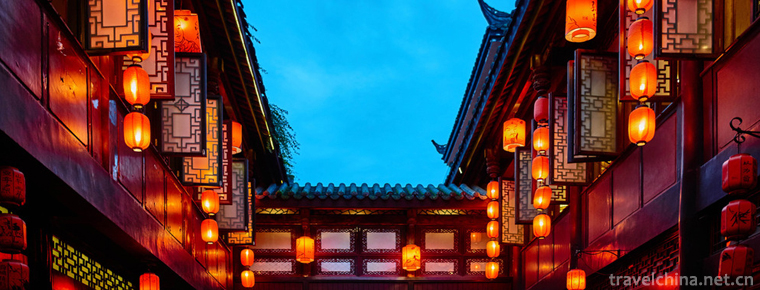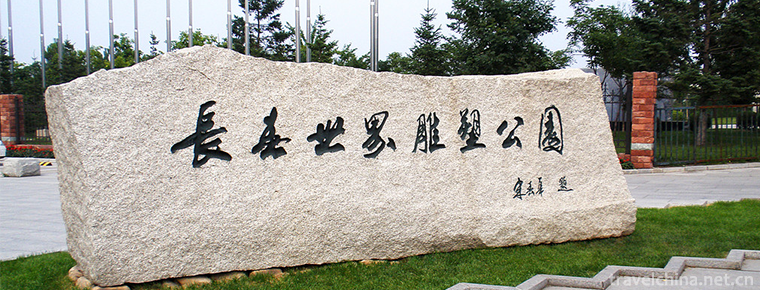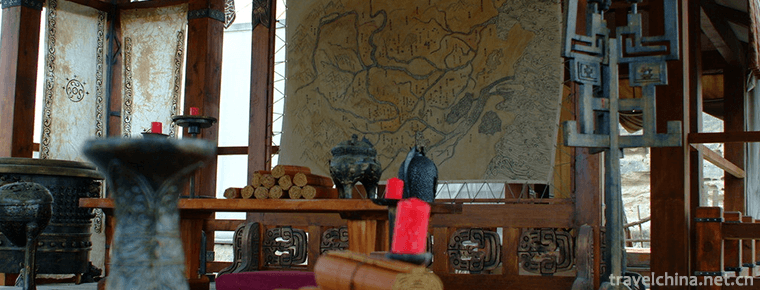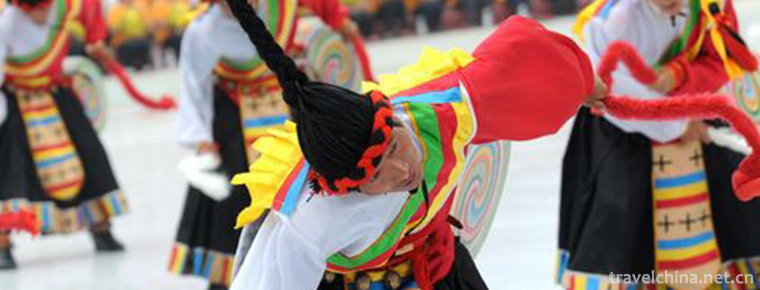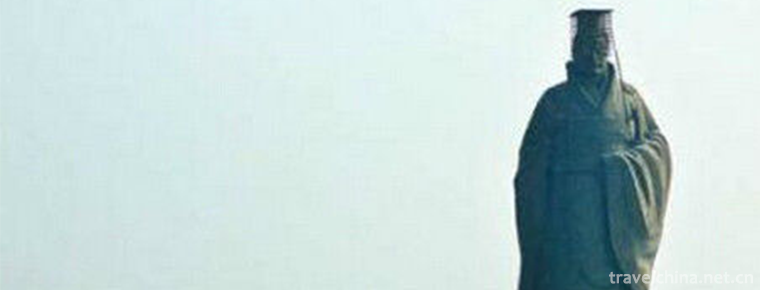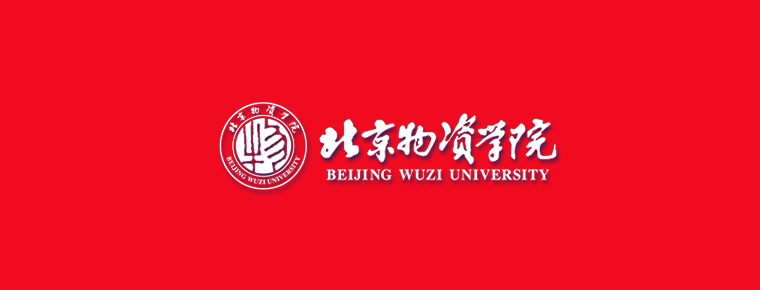The Forging Skill of Achang Husha Knife
The Forging Skill of Achang Husha Knife
Achang household knife forging technology, Yunnan Dehong Dai Jingpo Autonomous Prefecture Longchuan County household Sa Township traditional handicraft, one of the national intangible cultural heritage.
Achang household knife forging technology, the production process must go through cutting, billet making, proofing, grinding, decorative leaves, quenching, lighting, handle making, ribbon making, assembly and other 10 processes, especially quenching technology is the most prominent, through heat treatment to make the hardness and toughness of the blade to reach the best state, so as to make a knife.
On May 20, 2006, Achang household knife forging technology was approved by the State Council and listed in the first batch of national intangible cultural heritage list, item number_-41.
historical origin
According to historical records, after the Ming Dynasty's "Three Expeditions to Luchuan" (1441-1449), the Sino-Burmese border warfare was frequent, and the whole army of Dehong Border Pass gathered. Because the officers and soldiers were too long from the rear front, in order to ensure the supply of weapons, the Ming Army chose Husa, surrounded by mountains on all sides and with a very concealed terrain, to repair and make weapons on the spot, and to implement semi-military management of Husa, with villages as units, to carry out the division of production. Since then, Husa has become an "arsenal" that plays a major role in defending the border of Western Yunnan.
Since the Ming Dynasty, the craftsmen of Husa Achang nationality have continuously absorbed the techniques of making weapons of the Han nationality, together with the creation of the Achang nationality, forming a unique Achang knife craft. It has been handed down from generation to generation.
During the Republic of China, the production of household knife was flourishing. Husa merchants gathered together and were very busy. The prosperity of tool export has brought Husa economic and cultural prosperity, and the prosperous scenes of "five mountains and six temples", "six meetings and nine pendulums" and "nine towers and forty-seven bars" have appeared.
Process characteristics
Husha knife has many kinds and special crafts, including back knife (long knife), machete, waist knife, Tibetan knife (specially produced for Tibetan area), dagger, sword and other nearly 100 varieties of patterns. In terms of craftsmanship, back knife (long knife) and Tibetan knife are the most exquisite and typical. Most of these handmade knives are carved by hand from Nanmu, Hongmu, Daye Rosewood, Chicken Wing Wood, Ebony Wood and other precious local timber in Yunnan and Myanmar, so they are of great collection value. Husa back knife (long knife) is generally divided into Husa flat-headed knife, Husa seedling knife, Husa Town house knife and Husa horse knife.
The back knife of Huagang is made by mixing red, white and green steel, which is one layer of red iron and one layer of white iron. Then the surface of the back of the knife is burned to make them stick to a piece of iron bar. After the knife is made into a knife shape, it is shoveled white and polished smooth. The back knife of Huagang takes on three colors of red, white and blue. From this, the back knife of Huagang is named as the knife body of the back knife of Huagang is beautiful. The sharp edge of the knife, favored by men of all ethnic groups along the border between Yunnan and Myanmar, is not only an ornament to show the heroic force, but also a tool for agricultural cultivation and logging production and defense weapons.
Tibetan knife is wide and thick, with exquisite craftsmanship and different lengths. The knife handle is engraved with refined patterns such as "tiger whistling" and "flying swallow welcoming spring".
The length of Achang knife varies from production knife to life knife, long knife for hunter's body protection to dagger for livestock slaughter. Later, the Achang people used exquisite casting and forging technology to produce more and more sophisticated cutting tools. There is a fine division of labor among the villages where knives are made. Each village has its own famous brand products.
Technological process
Production process
The manufacturing process of Husha knife must go through 10 processes, such as blanking, blanking, proofing, grinding, leaf decoration, quenching, lighting, handle making, tape making and assembling, especially quenching. The hardness and toughness of the knife blade can reach the best state through heat treatment.
1. Blanking (or blanking):
A section of spring steel or carbon steel is cut out according to the cutter type to be hit. Careful consideration should be taken when cutting materials, and the material should be measured and used.
2. Burning and tapping:
Ironware needs charcoal as fuel, one person pulls the bellows, the other puts the cut steel plate into the fire and burns red, then clamps it out with a long clamp. Two people work together with a big hammer to make a uniform force path. After repeated burning and beating for more than ten times, the basic shape of the knife is produced. The shape, thickness, length and width of the knife are all appropriate.
3. Scraping (or sectioning):
Scrape the iron sheet with a file or grinding wheel until the tool is bright.
4. La Cao:
Place the basic machined tool on the bench, fix it, and pull out the canal parallel to the blade, so as to carve and decorate the next step.
5. quenching:
After burning the preliminary machined blade red, the blade is first put into the water tank, quickly removed and then forged to increase the hardness of the epidermis, and then quenched the whole body. After repeated heating and cooling treatment, the steel and toughness of the blade can reach the best state.
6. decoration:
The knife is polished repeatedly with a file or grinding wheel to make the knife brighter. Then the designs of "double dragon holding pillar" or "two dragon seizing treasure" are displayed with a chisel in the place where the knife is drawn. The logo of the knifer's own knife is engraved. Finally, according to the knife type, the knife handle and sheath are matched, and a qualified household spreader knife is calculated.
Tools and materials
The tools used are stoves made of wood bellows, iron, mud and stone, hammers, forceps, iron pillows, etc. When making knives, the steel produced in Baoshan and Tengchong areas is selected and heated repeatedly, forged and scraped into billets in the furnace fire, then quenched in water. Quenching technology is very demanding, the quality of sword often depends on the level of quenching technology. There is a kind of thin and flexible knife which is made by repeated processing after dipping in water and tempering with fragrant oil.
Inheritance and protection
Inheritance value
During the First World War, the British army formed a Jingpo army in Myanmar. Each soldier was equipped with a special type of knife called "Golka". In the battle with Napoleon's army, Husa Dao made successes. This knife came from Husa Achang's famous division. In 1990, the famous Husha knife-making division forged the "Kowloon" commanding knife, which symbolized the national takeoff, with its unique craft. The knife was used as the commanding knife of the honor guard of the Third Army of the Chinese People's Liberation Army.
Inheritance status
Under the pressure of foreign culture and social and economic transformation, the traditional skills and equipment of Husha Dao production are replaced by modern machinery and raw materials. With the old artists getting old and few successors, the skill of Husha Dao production is facing the danger of losing its transmission, which urgently needs rescue and protection.
Inheriting characters
Xiang Laosai, born in 1940, is a native of Lasa Village, Husa Achang Township, Longchuan County, Dehong Dai Jingpo Autonomous Prefecture, Yunnan Province. Known as "Knife King", it is a folk craftsman who makes a living by beating knives. It is also the representative inheritor of the first batch of national intangible cultural heritage projects. Born in a knife family, he learned the forging skills of household knife from his father when he was young. As an adult, Xiang Laosai visited famous knife makers in various villages to gain the expertise of various families and integrate his own technology to form his own unique knife-making process, especially famous for his exquisite quenching process. Quenching is the key to the success or failure of making a household knife. If you don't pay attention to it, all your work will be wasted. Xiang Laosai experienced countless attempts, and finally grasped the essence of quenching. He forged a household knife, which can cut copper and iron, twist fingers softly, wrap around his waist, and break towels head-on.
protective measures
In 1960, Husa set up Husa Iron Farm Tool Factory, which mainly produces agricultural tools. It purchased the more advanced semi-automatic air hammer and machine tools at that time, which improved the production efficiency to a certain extent.
On May 20, 2006, Hushadao forging technology was approved by the State Council to be included in the first batch of national intangible cultural heritage list; in June 2007, "Hushadao King" event was selected as the representative of International Intangible Cultural Heritage Protection successors. "Achang household knife forging technology" has been further effectively protected, the lost "seven-color knife" technology will be restored and inherited.
social influence
Because of its exquisite workmanship, Husa Dao is not only treasured by the people, but also loved by the neighboring Han, Dai, Jingpo, Lisu, Tibetan and Bai nationalities. Not only to Beijing, Tibet, Qinghai, Xinjiang, Gansu, Inner Mongolia and other places, but also to Myanmar, Thailand, India and other countries.
Cultural anecdotes
The Achang people are not only good at knife, but also very fond of knife. Every family has at least one long knife. When young men get married, they always have to carry a long knife on their back, so that they appear to be vigorous. This custom continues all the time. It is said that there is also a very special custom in the Achang nationality. When a woman's parents choose her son-in-law, they not only depend on her son-in-law's moral character, but also have an important indicator of whether you can knife or not.




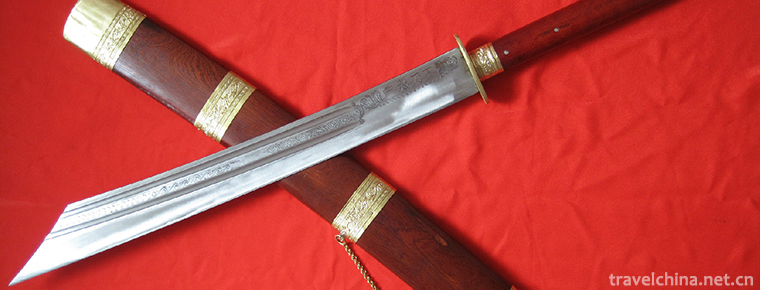
-
Jinli Street
Address:No. 231, Wuhou Temple street, Chengdu, Sichuan,China.
Views: 132 Time 2018-09-29 -
The Bund
The Bund, located on the Huangpu river bank in Huangpu District, Shanghai.
Views: 160 Time 2018-10-12 -
Changchun World Sculpture Park
Changchun World Sculpture Park is located in the south of Renmin Street in Changchun City. It covers 92 hectares, including 11.8 hectares of water. .
Views: 199 Time 2018-12-05 -
Bayanbulak Grassland
Bayinbrook grassland: formerly known as Yuledus grassland, Zhuledus grassland, Yuludus grassland, because it is mainly located in Xinjiang Bayinguoling Mongolian Autonomous Prefecture and the northwes.
Views: 124 Time 2018-12-12 -
Nanwan Lake Scenic Area
Nanwan Lake, also known as Nanhu Lake, is located in Xinyang City, Henan Province. It is known as the "Pearl of South Henan" and is a famous natural scenic spot of Nanwan Lake. All around th.
Views: 182 Time 2019-02-07 -
Niulang and Zhinu Scenic Spot
Niulang Zhinu Scenic Area is located in Yanya Town, southeast of Yiyuan County, Shandong Province, 15 kilometers away from the county town. The scenic area is mainly composed of Daxianshan Mountain.
Views: 386 Time 2019-02-07 -
Legend of Camel Spring
Camel Spring is a provincial key cultural relic protection unit and a patriotic education base. Located in Jiezi Township Unity Village, with convenient transportation and direct access to tertiary oi.
Views: 142 Time 2019-05-15 -
Traditional Brewing Techniques of Brewing Wine
Chrysanthemum wine is a necessary drink for Chongyang Festival. It has a long history of brewing. Royal chrysanthemum liquor of Ming and Qing Dynasties was a kind of precious liquor created on the bas.
Views: 139 Time 2019-06-09 -
Guozhuo Dance in Shannanchang
Shannanchang Guozhuo Dance is a kind of waist drum, which originated in Dabu (now Jiacha) area. Legend has it that in the mid-eighth century, with the help of Buddhist masters such as lotus and peanut.
Views: 163 Time 2019-06-13 -
Legend of Su Xian
The legend of Suxian is a local folklore with a long history. Su Xian, Ming Lian, from Guiyang. Su Da lost his father in his early years and depended on his mother for his life. One year, the plague w.
Views: 197 Time 2019-06-17 -
Beijing Wuzi University
Beijing Wuzi University is a public institution of higher learning which is characterized by logistics and circulation, based on economic disciplines, with management disciplines as its main branches,.
Views: 313 Time 2019-09-06 -
Needlework of Chinese embroidery
Category: random needling, straight needling, disc needling, trowel needling, grabbing needling, flat needling, scattered wrong needling, weaving embroidery, applying needling, auxiliary needling, variant embroidery .
Views: 123 Time 2020-12-12
